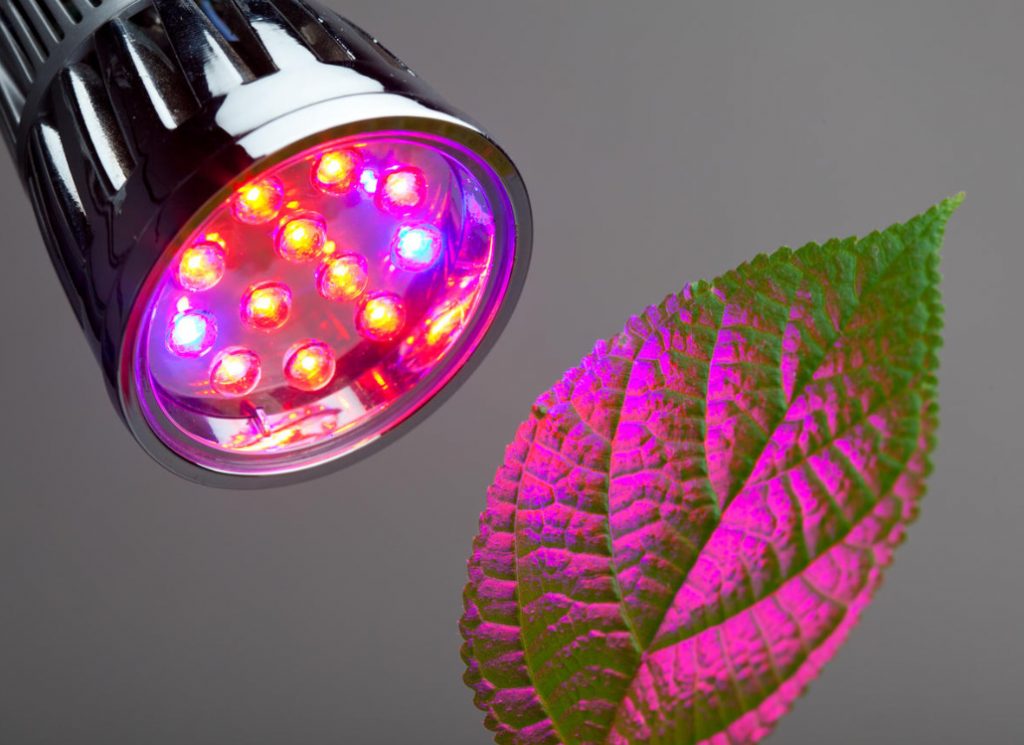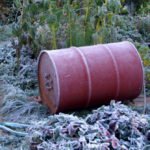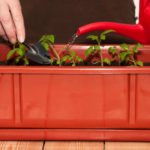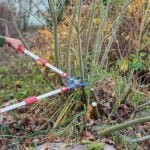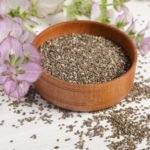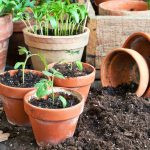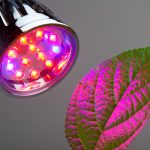8. Led lamp
If the price is important to you, look at the led analog, which is more affordable, but not less than the number of advantages. For additional illumination of seedlings, choose a lamp that creates a pinkish-purple glow. This device is economical, convenient and safe to use, it serves for a long time (up to 100 thousand hours), gives out a minimum of heat and is famous for good light output.
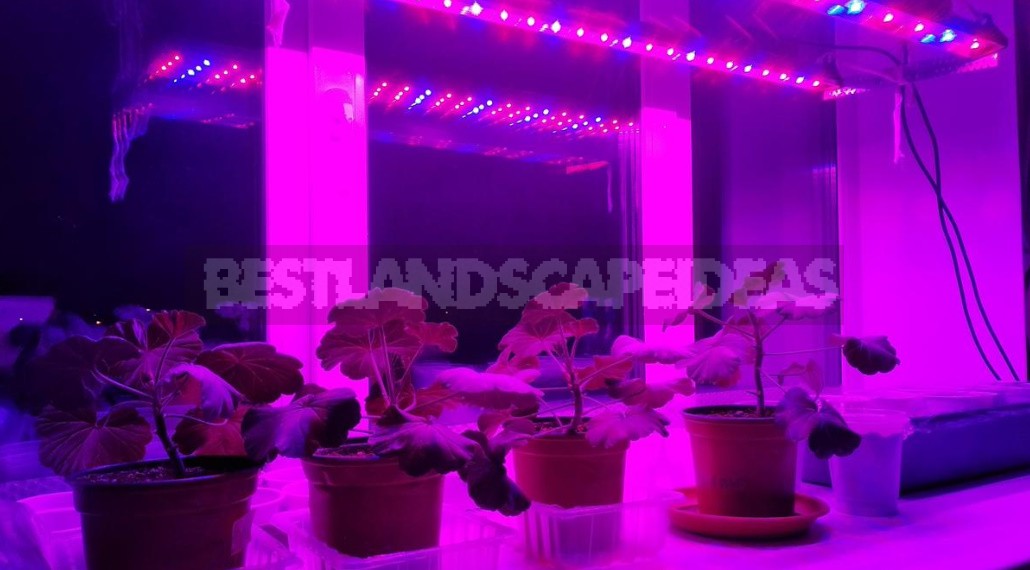
Just do not forget that the seedlings will not be fed with light alone. If you want to get strong, healthy plants, create an optimal temperature regime for them and water them on time. Special importance should be given to high-quality soil designed specifically for growing seedlings, as well as timely fertilizing with a balanced fertilizer.
9. Jump to the sun
If the purchase and installation of a phytolamp is still only in your plans, try to help the seedlings catch more light in other ways. The easiest way is to put books, small boxes or other handy material under the seedling container, which will help the plants get closer to the glass and become more accessible to natural rays. This is especially true for baby seedlings, whose access to light is often blocked by a window frame.
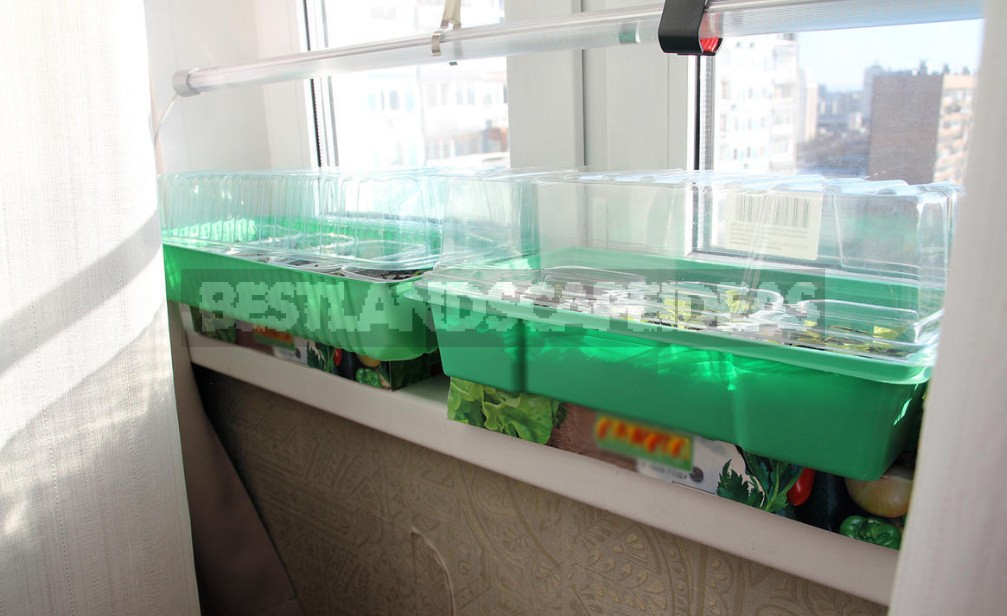
10. High-rise building for seedlings
If you can not fit numerous plants on the plane of the windowsill, you can go the other way — buy or build a rack with several shelves on which you can place all the seedlings. This useful design will allow more efficient use of the area around the window and will contribute to better illumination of seedlings with sunlight.
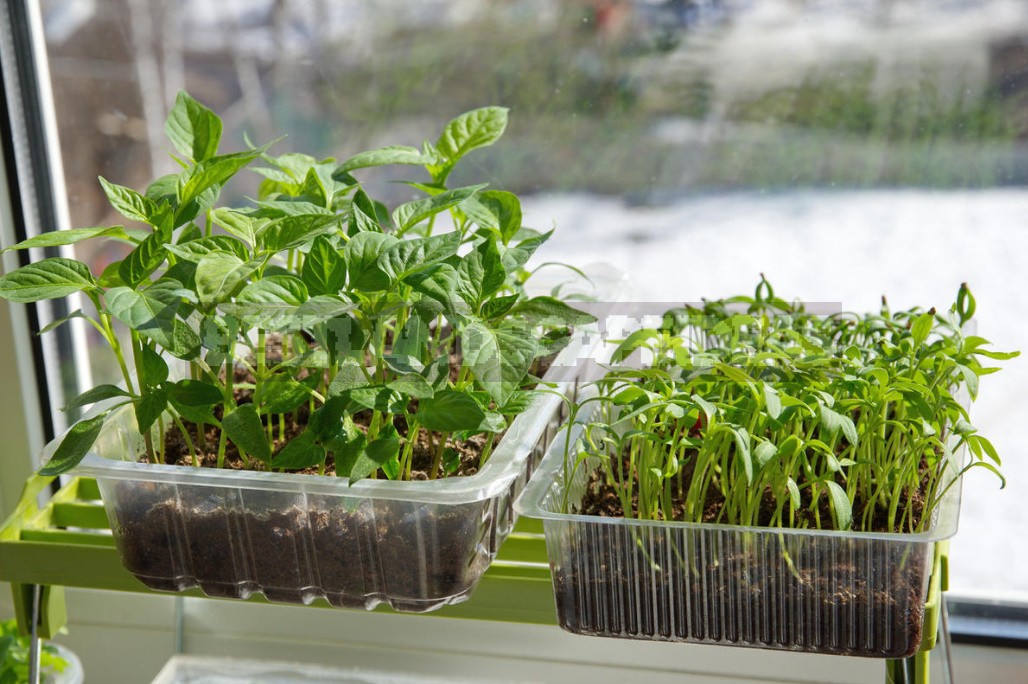
If you do not hesitate to thoroughly wash the window glass on both sides, you can increase the illumination of plants by at least 15%. And that’s a lot!
11. Paper additional lighting
It is no secret that white surfaces perfectly reflect sunlight. This fact can be used when growing seedlings: make a screen out of white paper and cardboard, which will not allow the sun’s rays to get lost in the room and redirect them to the “backs” of seedlings.

If the seedlings are located on a window in 1 row, take a piece of cardboard equal to the length of the window sill and a height of 35-40 cm.. Paste it on one side with sheets of white paper and attach at the corners of the pieces of strong thread. Tie the structure to the curtain rod at such a height that the seedling boxes are enclosed between the window glass and the screen.
12. Reflective film to help
You will achieve a greater effect if you use a reflective (sunscreen) film, which many of us attach to Windows in the summer heat, instead of white paper. This material perfectly reflects the sun’s rays and redirects them in the opposite direction.
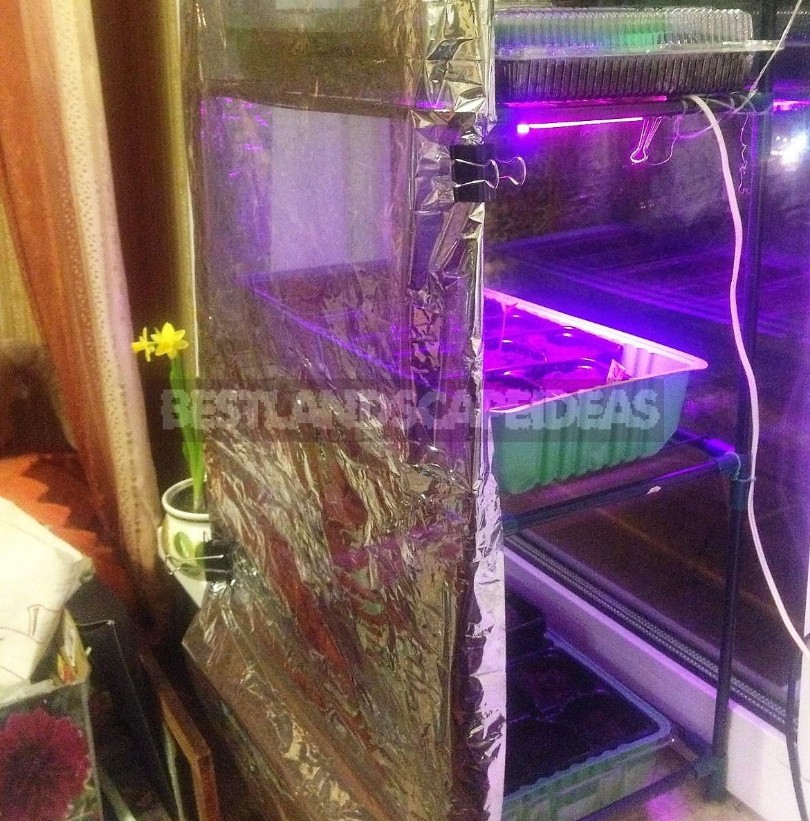
If your seedlings are located on a rack, create a light house based on a budget reflective film, in which the seedlings will be illuminated from all sides.
13. Source of additional rays-food foil
If you can’t find a reflective film in stores outside of the season, take the food foil for baking, which every housewife always has at hand. This inexpensive material has a shiny surface, which means that the screen made on its basis can effectively block the sun’s rays from entering the room and make them gather on the windowsill.
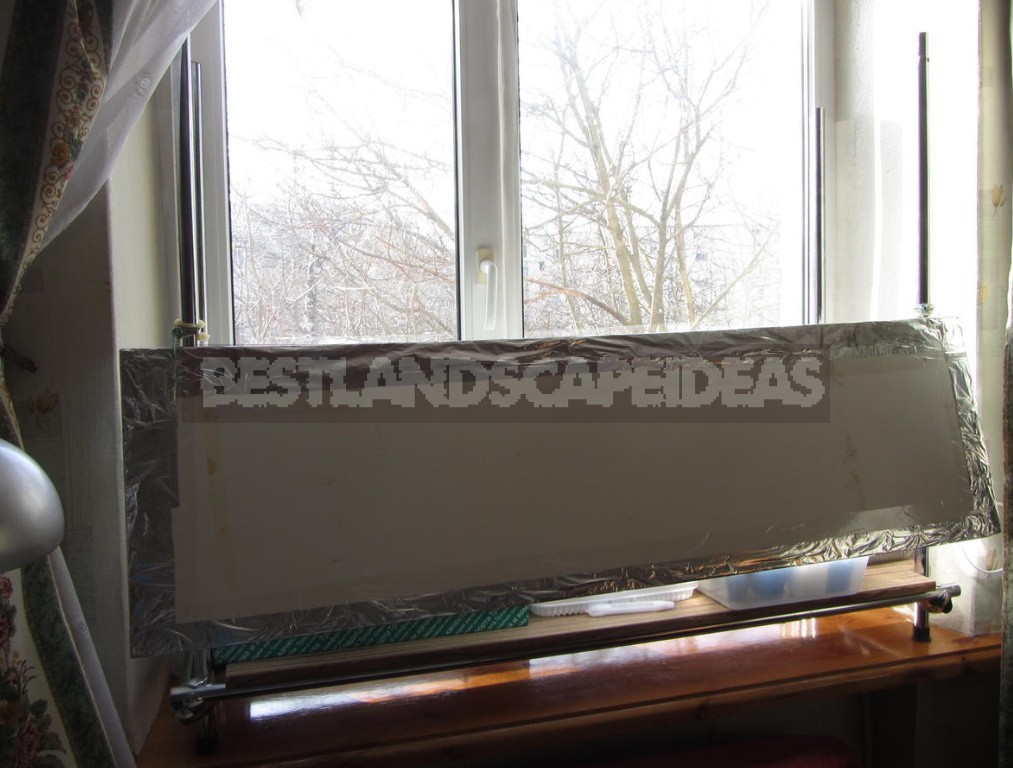
14. the remains of building materials will be Useful
Men gardeners painstaking pasting cardboard with paper or foil may not like it, often it is much easier to do more rough work. In this case, any remnants of light-colored building materials, such as a plastic white panel or a piece of drywall, will be useful. Cut a piece of the appropriate size and fix it in any way convenient for you on the edge of the windowsill on which the seedlings stand. Such a solar ray reflector is also effective.
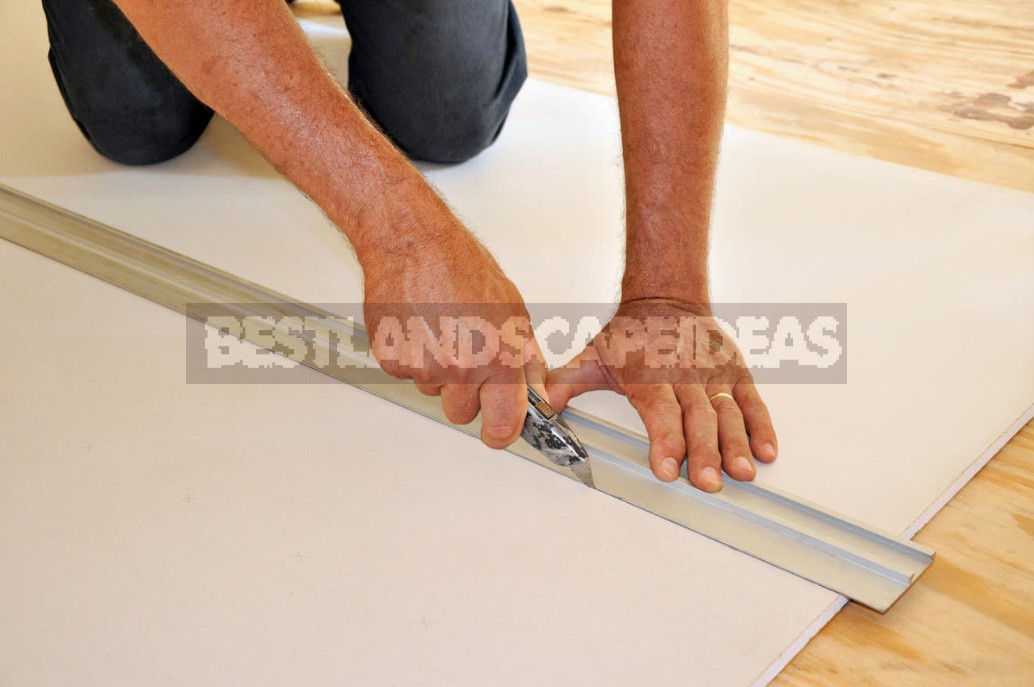
Even if you can’t think of anything better than to substitute a galvanized sheet of profiled flooring to the window, this will already be a big plus for seedlings!
15. Help out foiled penofol
In this affordable brilliant material used in construction as insulation, savvy gardeners considered a great helper for adding light to seedlings. Lightweight heat insulation material is laid is inexpensive and it holds the shape by itself. Its segment can be hung to the curtain rod at the level of seedling pots or fixed to the back wall of the rack using clothespins or wire hooks. The retroreflector is ready.
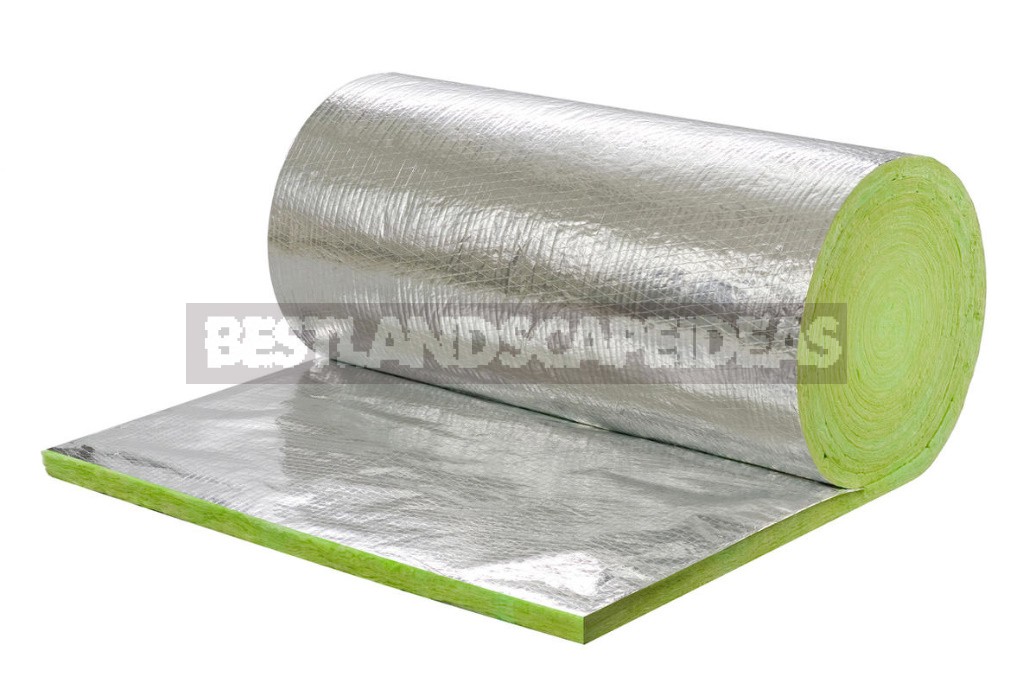
Penofol will also help to insulate a cold windowsill that threatens to undermine the health of seedlings.
The above methods of additional illumination of seedlings may seem troublesome only at first glance. In practice, everything is much simpler! Once you make a home-made reflective screen or buy a good lamp, you will be able to get strong, chunky seedlings for many years, which in gratitude will definitely reward you with a generous harvest.
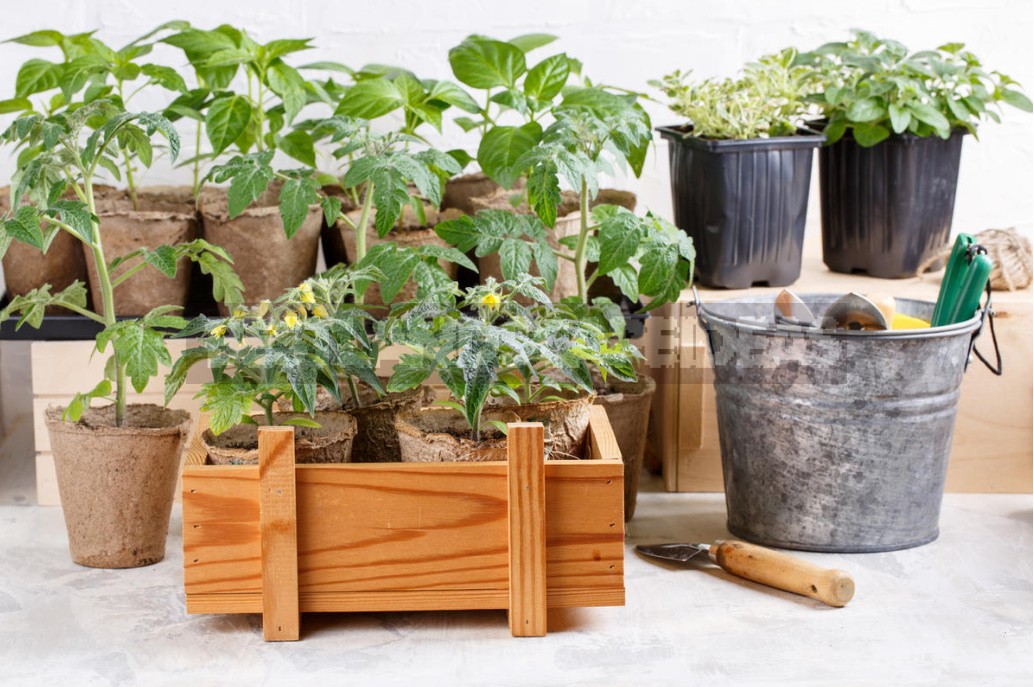
And if you have already tried out a particular type of lamp for additional illumination of seedlings or have made an effective device for this purpose, be sure to tell us about it in the comments. Your experience will be useful to many summer residents!
